Презентація на тему «Еconomy of Sweden»

economy of Sweden
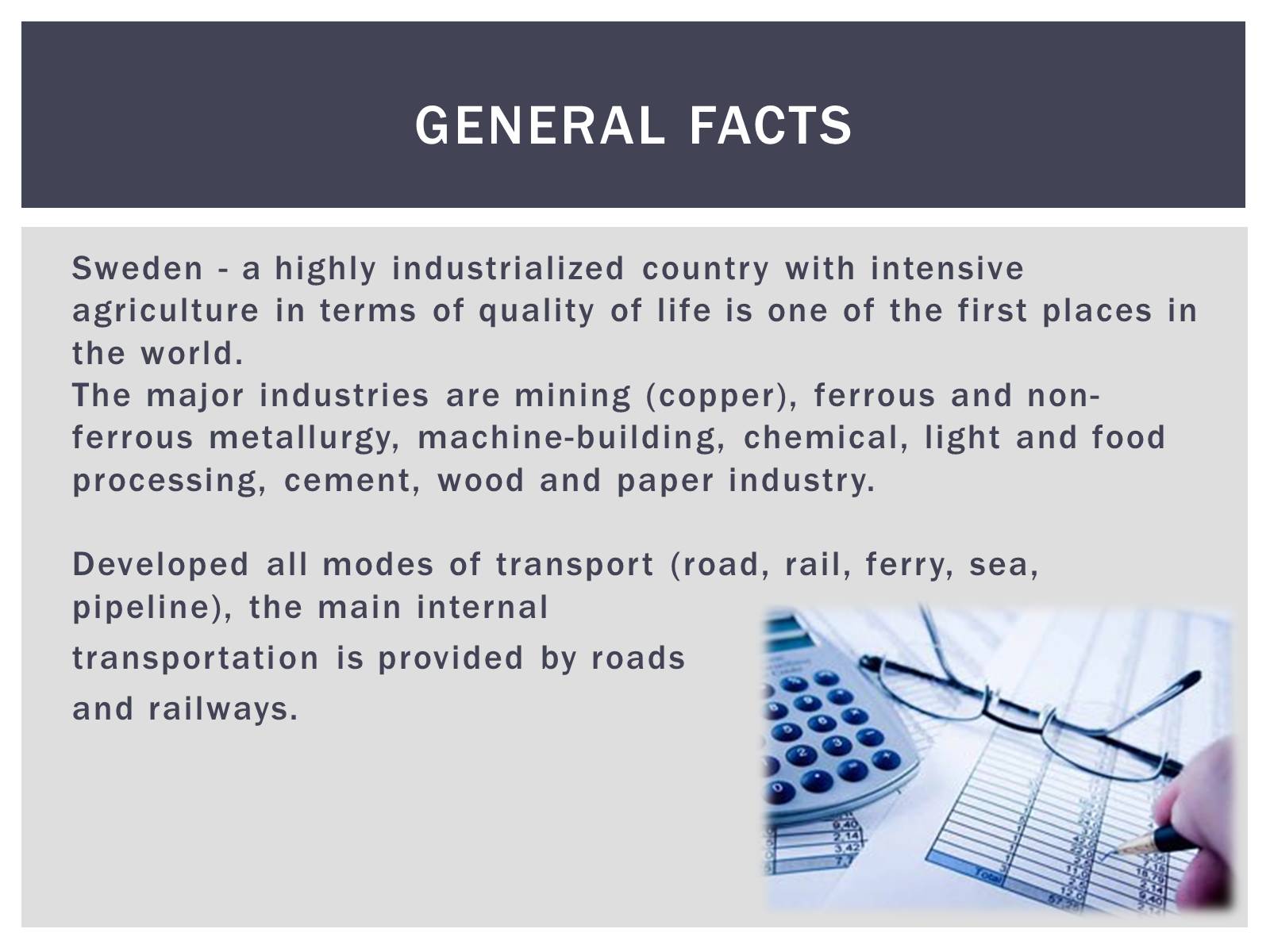
Sweden - a highly industrialized country with intensive agriculture in terms of quality of life is one of the first places in the world.The major industries are mining (copper), ferrous and non-ferrous metallurgy, machine-building, chemical, light and food processing, cement, wood and paper industry.Developed all modes of transport (road, rail, ferry, sea, pipeline), the main internal
transportation is provided by roads
and railways.
General facts
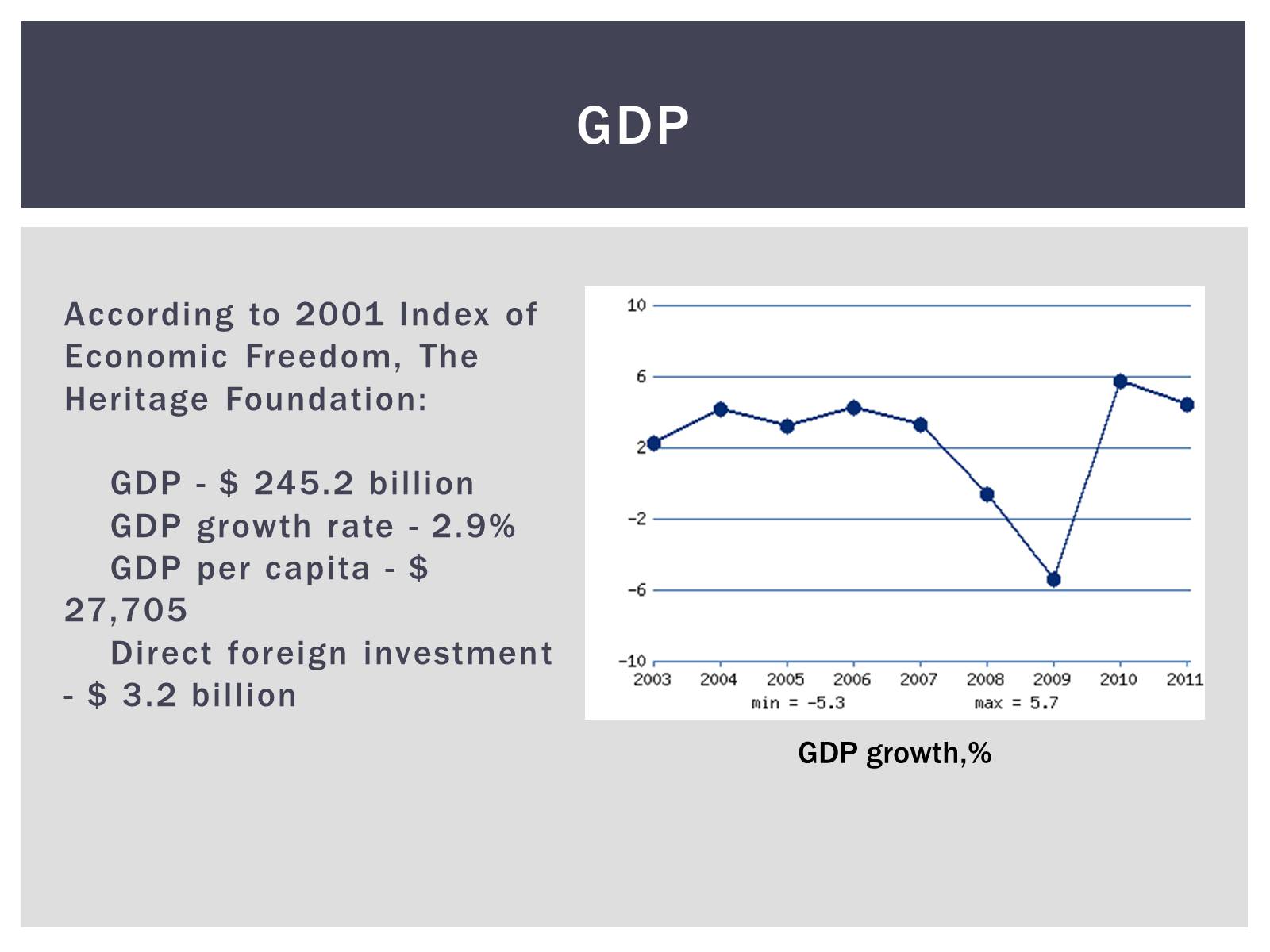
According to 2001 Index of Economic Freedom, The Heritage Foundation: GDP - $ 245.2 billion GDP growth rate - 2.9% GDP per capita - $ 27,705 Direct foreign investment - $ 3.2 billion
GDP
GDP growth,%
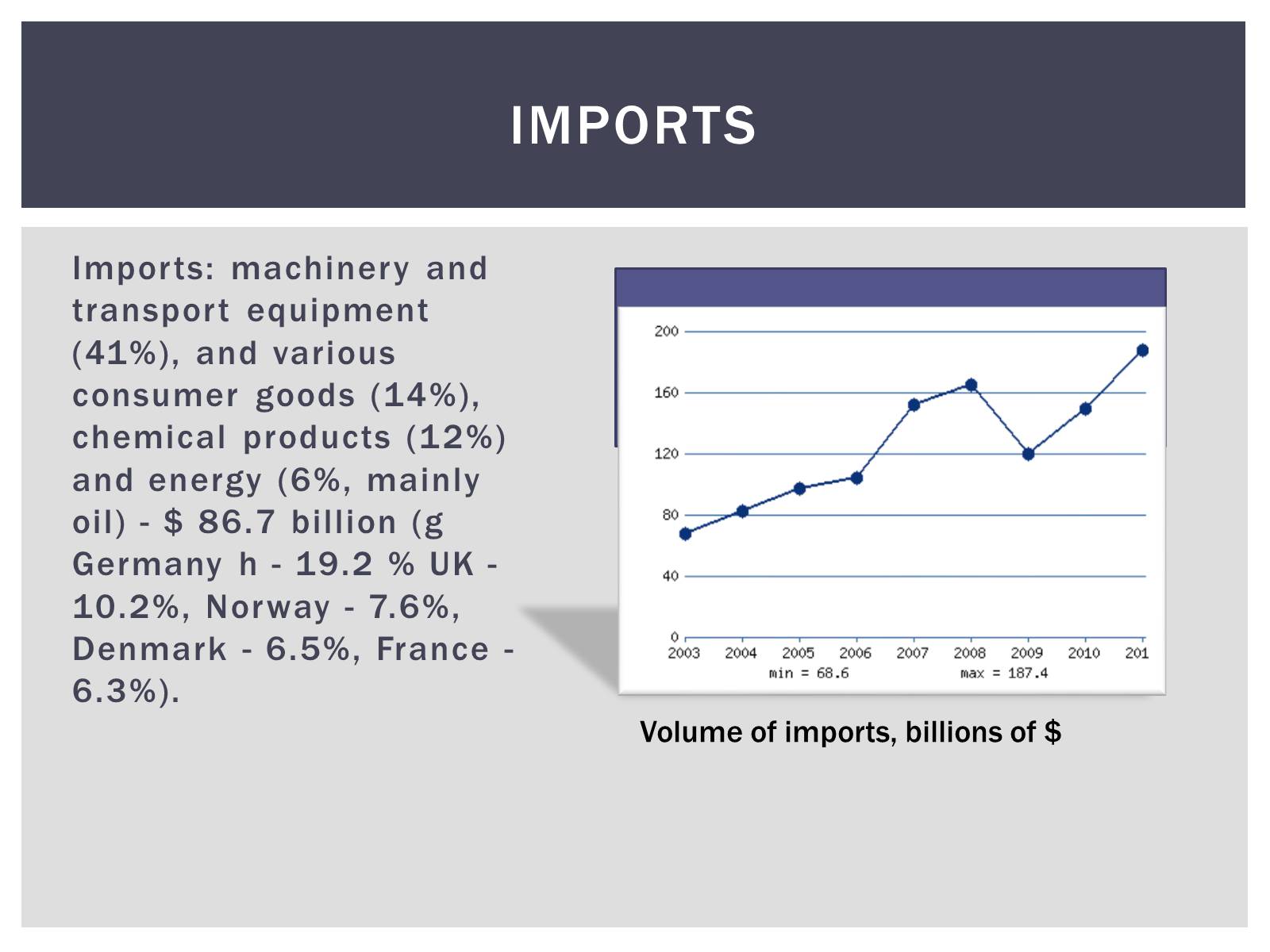
Imports: machinery and transport equipment (41%), and various consumer goods (14%), chemical products (12%) and energy (6%, mainly oil) - $ 86.7 billion (g Germany h - 19.2 % UK - 10.2%, Norway - 7.6%, Denmark - 6.5%, France - 6.3%).
Imports
Volume of imports, billions of $
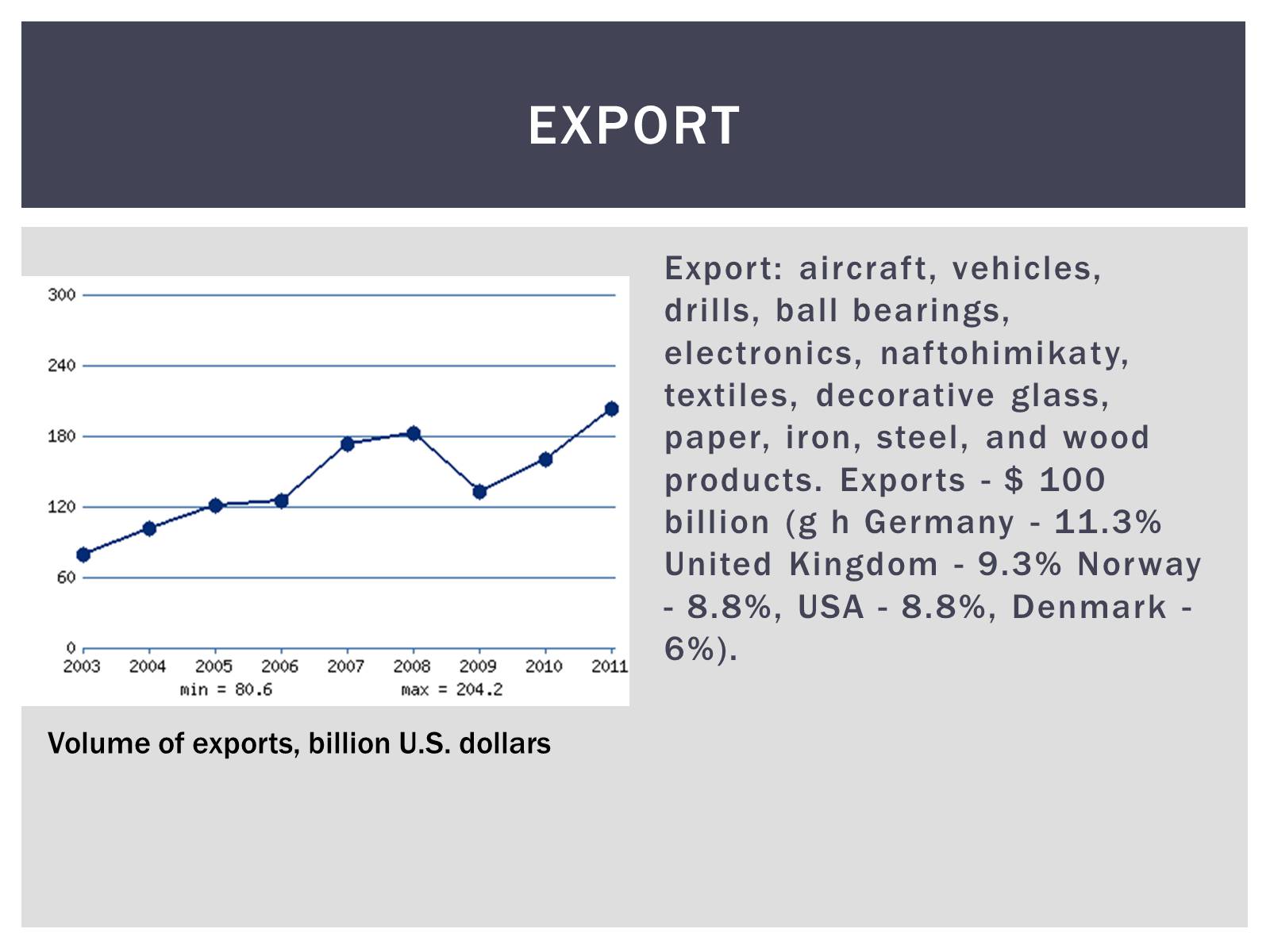
Export: aircraft, vehicles, drills, ball bearings, electronics, naftohimikaty, textiles, decorative glass, paper, iron, steel, and wood products. Exports - $ 100 billion (g h Germany - 11.3% United Kingdom - 9.3% Norway - 8.8%, USA - 8.8%, Denmark - 6%).
Export
Volume of exports, billion U.S. dollars
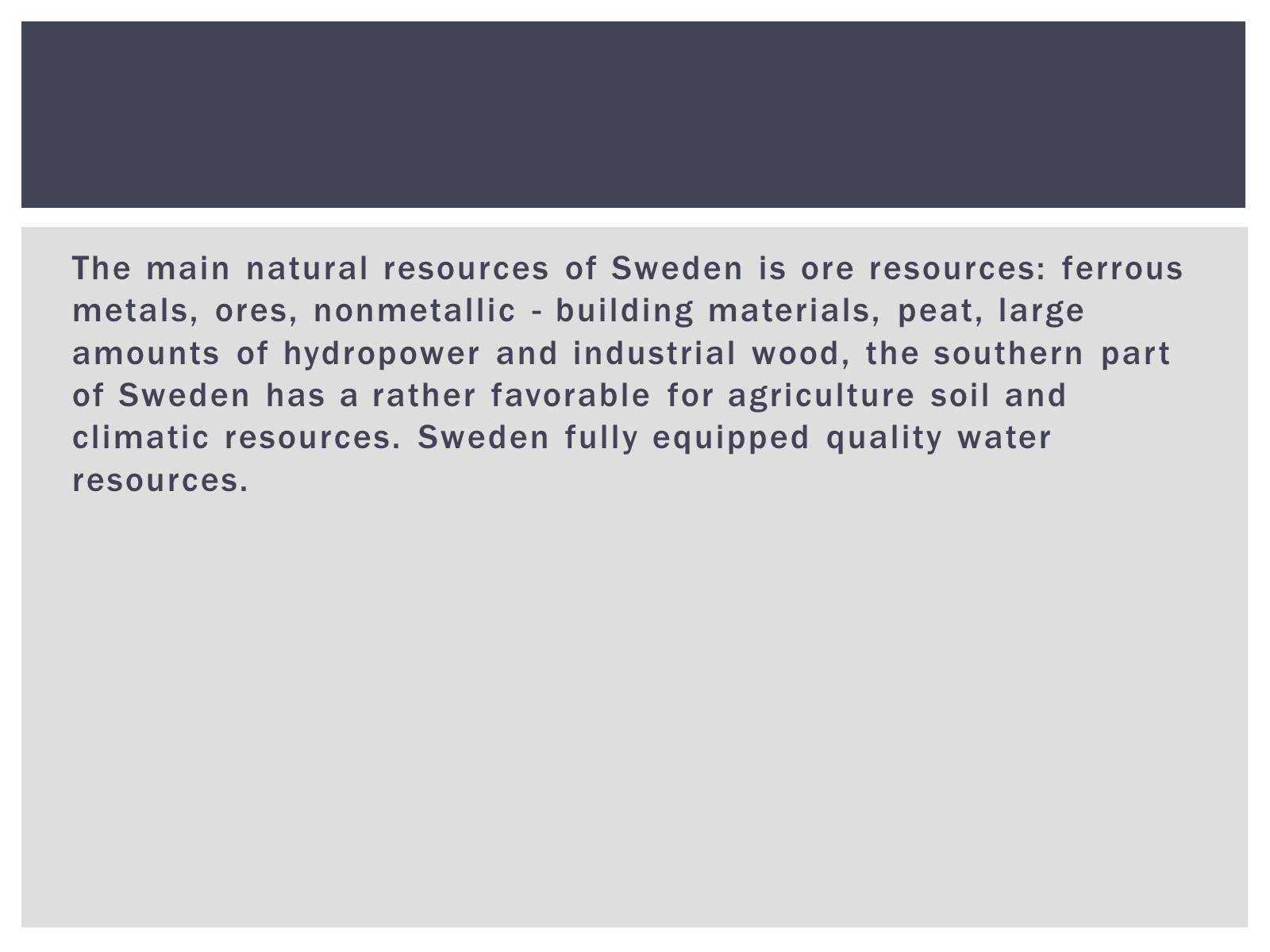
The main natural resources of Sweden is ore resources: ferrous metals, ores, nonmetallic - building materials, peat, large amounts of hydropower and industrial wood, the southern part of Sweden has a rather favorable for agriculture soil and climatic resources. Sweden fully equipped quality water resources.
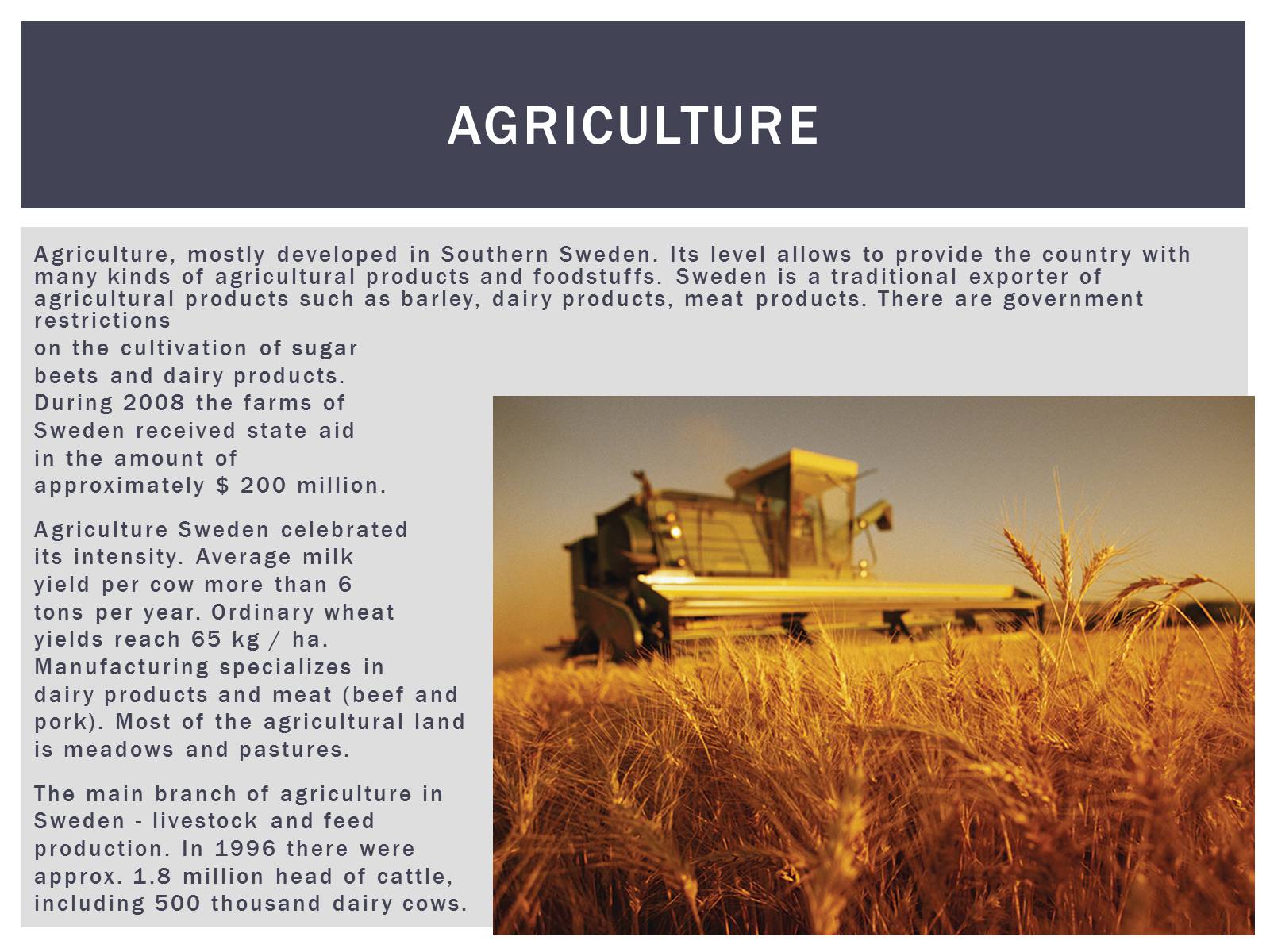
Agriculture, mostly developed in Southern Sweden. Its level allows to provide the country with many kinds of agricultural products and foodstuffs. Sweden is a traditional exporter of agricultural products such as barley, dairy products, meat products. There are government restrictions
on the cultivation of sugar
beets and dairy products.
During 2008 the farms of
Sweden received state aid
in the amount of
approximately $ 200 million.Agriculture Sweden celebrated
its intensity. Average milk
yield per cow more than 6
tons per year. Ordinary wheat
yields reach 65 kg / ha.
Manufacturing specializes in
dairy products and meat (beef and
pork). Most of the agricultural land
is meadows and pastures. The main branch of agriculture in
Sweden - livestock and feed
production. In 1996 there were
approx. 1.8 million head of cattle,
including 500 thousand dairy cows.
Agriculture